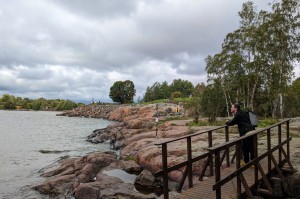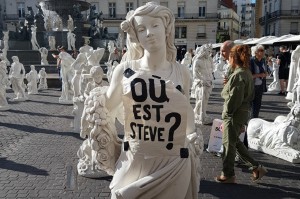Field Trip: Gosh! Is It Alive? ARKEN Museum Of Modern Art, Denmark
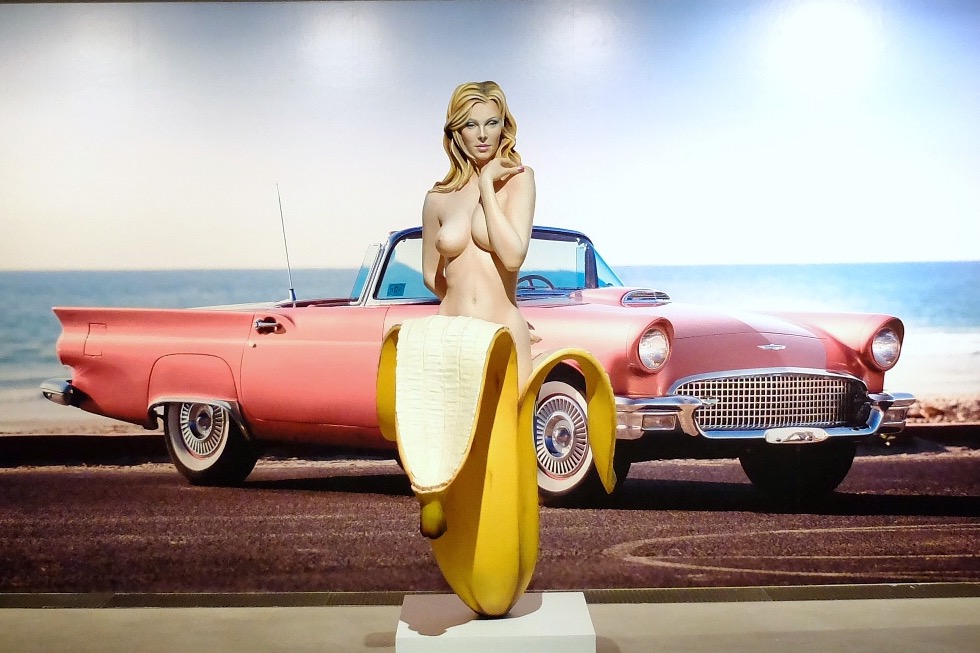
Why is it that hyperrealistic depictions of the human form are so unsettling? Pete Goodbody travels to Denmark to experience unnervingly realistic sculpture at ARKEN…
Designed to resemble a beached ship, the ARKEN Museum of Modern Art presents as a striking figure on the coastline of Koge Bay: a 25-minute metro ride from the centre of Copenhagen, in Denmark.
But not all is quite what you’d expect from an average art gallery. ARKEN’s permanent collection is deliberately curated without theme, style, or apparent direction; designed to make the viewer ask questions about art, and evaluate perceptions as to what counts as art. It’s an uplifting, even joyful experience, with some genuinely funny moments.
Given the recent antics at polling stations in the UK, a highlight was Elmgreen and Dragset’s depiction of a broken Administration office staircase, entitled Social Mobility (2005—present). Clever, witty and imaginative, this piece seemed to sum up the overall curation without actually explaining it.
There’s a room devoted to Damien Hirst, and another given over to Ai Weiwei’s 12 depictions of the signs of the Chinese Zodiac – his touring Zodiac Heads – currently on extended loan until 2019. The fact that ARKEN manages to attract such big names is an indication of just how good this gallery is.
And then there’s Gosh! Is It Alive?: ARKEN’s temporary exhibition (see it until 6 August) of 39 human body sculptures, nearly all of which were unnervingly realistic. It isn’t easy to rationalise why a life-like depiction of the human form is so very much more unsettling than the real thing, but believe me, it is.
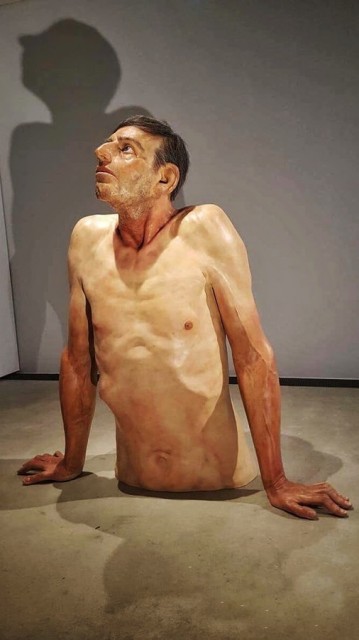
Here was a kind of horror show of humankind. Ron Mueck’s A Girl (2006) is perhaps the perfect example. A massive baby, still with the umbilical cord attached, flecked with blood and realistic whispers of hair on her head. We’ve all seen new born babies before, so that’s not new, but to see one scaled up to perhaps 10-times real life size is a startling experience. One couldn’t help going back for another look. It’s the stuff of Chucky-type nightmares.
A topless torso of a man explodes through the floor: Zharko Basheski’s Ordinary Man (2009-2010). Unshaven and looking towards the ceiling, he might be climbing out of a swimming pool, such is the pose. On the other hand, he may be trying to climb out of an abyss with a brief glance towards the heavens, hoping to catch the eye of his maker.
Corner after corner, there is an assault on the senses and, mostly, a recoil at what comes next. I watched a couple looking at Duane Hanson’s Salesman (1992), a mannequin dressed in a business suit. When they moved away, I was fully expecting it to follow them.
Nakedness is a recurring theme. In itself, this seems an unlikely problem for an exhibition, but these were replicas of people laying bare not only their bodies, but also their souls. We were staring into their lives, and they let us in. It didn’t matter that they were inanimate; to the viewer, they were pretty much real, and it would only take one of them to breathe or to wink back at us and we would have been completely freaked out.
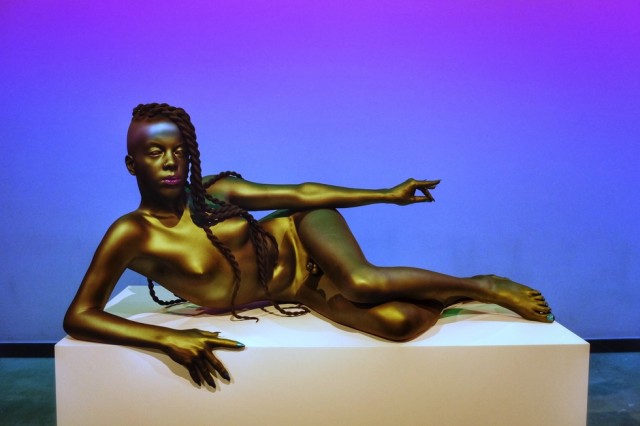
New Yorker, self-proclaimed “It-Girl with a penis” Juliana Huxtable, was, perhaps a welcome relief. Immortalised into sculpture by Frank Benson using 3D scanning tech – Juliana (2014-2015) – this was a transformation of a real transgender woman into a representation of a crazy, sexy, cyborg. A reminder that neither gender, identity nor sexuality are binary, and a rather magnificent, powerful statement of courage and liberation.
Nearby, Mel Ramos’ Chiquita Banana (2007) was a kind of tropical paradise: a topless woman, a cool car and fairly typical sexual symbolism. Even so, the soft porn, air-brushed, realism of the piece un-nerves, and makes you wonder whether this is really okay to be standing in front of, as a spectator with a camera.
That is presumably the point of Gosh! Is It Alive?. It challenges. None of the subject matter should be a problem. Naked babies, naked people, clothed people, trans people. Why does any of this cause an issue?
There are moral concerns about cloning humans, there are worries about robots taking over where humans once were, and then there is a general uncertainty about what this world will look like in the future – even in one year’s time. Now that artists can make facsimiles of us look so real, just imagine what will happen when the scientists and engineers get on the case.
Pete Goodbody
See Gosh! Is It Alive? at ARKEN Museum of Modern Art, Denmark, until 6 August 2017 — adults DKK 115, students DKK 95
Opening hours Tuesday–Sunday 10am–5pm, Wednesday 10am–9pm, Monday closed
Images, from top: Installation shot of Mel Ramos’ Chiquita Banana (2007), Zharko Basheski’s Ordinary Man (2009-2010), and Frank Benson’s Juliana (2014-2015). All artworks part of Gosh! Is It Alive?. Images by photographer Pete Goodbody, 2017, and courtesy the artists



